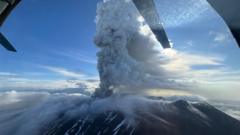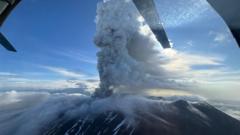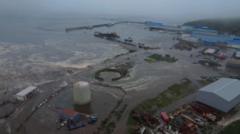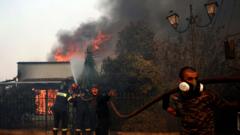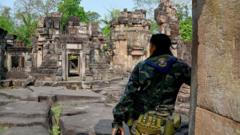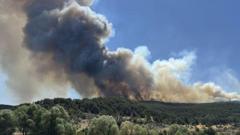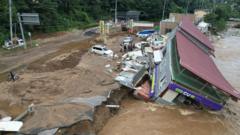Mount Lewotobi Laki-Laki erupted, sending an ash cloud more than 11 kilometers into the atmosphere and prompting the highest alert level in Indonesia. A 7km exclusion zone is in effect, with evacuations underway and warnings issued for potential lahars.
Indonesia's Mount Lewotobi Laki-Laki Erupts, Highest Alert Issued
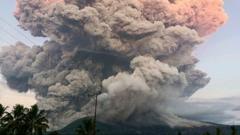
Indonesia's Mount Lewotobi Laki-Laki Erupts, Highest Alert Issued
Major eruption forces evacuations and flight cancellations as volcanic activity heightens.
Indonesia's Mount Lewotobi Laki-Laki unleashed an impressive ash cloud exceeding 11 kilometers high on Tuesday, leading officials to declare the country's highest alert level. The eruption occurred at 17:35 local time (10:35 BST), according to Indonesia's volcanology agency, affecting air quality and travel over the popular tourist destination of Flores.
A mandatory 7-kilometer exclusion zone has been established around the summit of the 1,584-meter (one mile) high twin-peaked volcano. Although officials have reported no immediate injuries or property damage, the situation remains dire following the volcano's previous eruptions in November, which resulted in nine fatalities and widespread evacuations.
To mitigate health risks from ash inhalation, residents in the vicinity have been advised to wear face masks. Muhammad Wafid, head of the geology agency, has urged individuals to avoid all activities within the exclusion zone and warned of the potential for lahar floods, which could occur during heavy rainfall.
As a precaution, the National Disaster Mitigation Agency has initiated evacuations in at least one nearby village and reported ash fall in several locations just outside the exclusion zone. Continued seismic activity, indicated by ongoing tremors, suggests that the volcanic threat persists.
Lewotobi Laki-Laki's last significant eruption took place in May, which had similarly prompted authorities to raise alert levels. The name "Laki-Laki," meaning "man" in Indonesian, reflects the cultural significance of the mountain, while its twin "Perempuan," meaning "woman," towers at 1,703 meters, exemplifying the unique geology and mythology surrounding this region.


